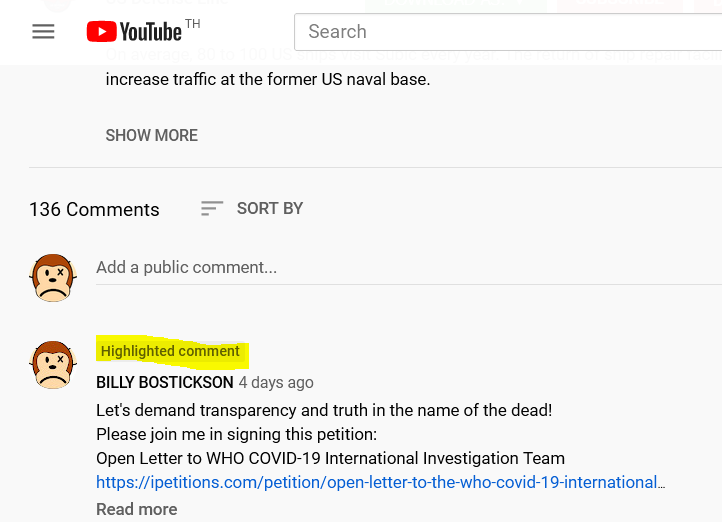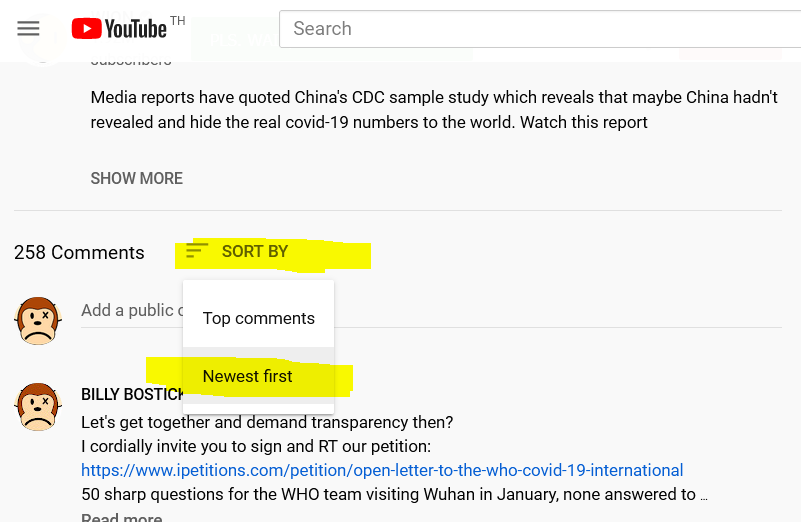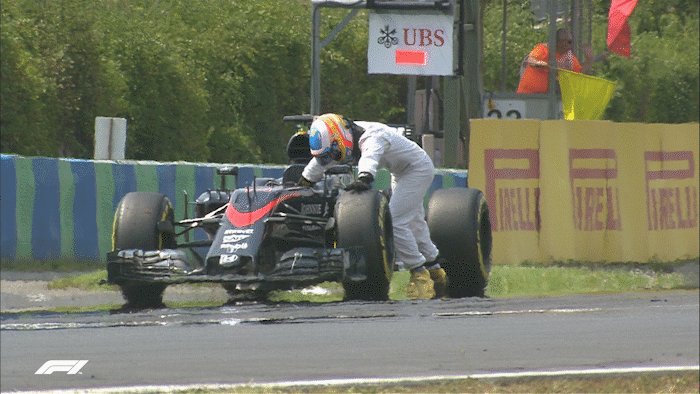In a final address, @JusticeATR Makan Delrahim says some of the changes recommended by House Judiciary are "quite sensible." DOJ needs more funding for antitrust, and he backs higher filing fees for mergers.
More from Law
One of the judges this story mentions is William Cassidy, who was promoted from an Atlanta IJ position to a BIA member position in 2019 by the Trump DOJ. Cassidy has an awful history that has been well-documented, but I'm still enraged reading this reporting.
The story notes that the EOIR Director served as an ICE attorney in Atlanta and practiced before Cassidy for years. And it points to FOIA records unearthed by Bryan Johnson showing they remain friendly.
A trove of complaints against Cassidy was published by AILA in 2019 after FOIA litigation. They generally show misconduct, substantiated in the record, followed by "written counseling" etc.
One way Cassidy could avoid discipline is by turning off the recording device during the hearing. If he made a lewd or offensive comment off the record, all the EOIR would do is listen to the recording. If it's not there, the complaint is "unsubstantiated" https://t.co/wUeBPEEbpV

In that case, Cassidy joked about a detained immigrant saying he missed his wife. The complaint was dismissed because the ACIJ found "no levity or joking" in the comment.

\U0001f6a8New investigation: \U0001f6a8
— Tal Kopan (@TalKopan) January 22, 2021
How sexual harassment and misconduct has been allowed to flourish in the immigration courts, a system intended to give immigrants a fair chance to stay in the U.S.:https://t.co/Lw8hpK5jSe
The story notes that the EOIR Director served as an ICE attorney in Atlanta and practiced before Cassidy for years. And it points to FOIA records unearthed by Bryan Johnson showing they remain friendly.
A trove of complaints against Cassidy was published by AILA in 2019 after FOIA litigation. They generally show misconduct, substantiated in the record, followed by "written counseling" etc.
One way Cassidy could avoid discipline is by turning off the recording device during the hearing. If he made a lewd or offensive comment off the record, all the EOIR would do is listen to the recording. If it's not there, the complaint is "unsubstantiated" https://t.co/wUeBPEEbpV

In that case, Cassidy joked about a detained immigrant saying he missed his wife. The complaint was dismissed because the ACIJ found "no levity or joking" in the comment.

A Call for Help!
1. we have a petition/open letter for the WHO
https://t.co/Bie8pUy7WJ
2. 372 people signed it but we want to boost it
3. I post link ascomment on related YT videos
Tks @KevinMcH3 for the tip
4. You can help by liking the comments
5. That will increase visibility!

6. Links for YT videos with comments are here
1. China curtails hunt for virus origins
https://t.co/NhcYdtsd2Y
2. China: nearly 500,000 may have been infected in Wuhan
https://t.co/KRUQ5hFrii
3. WHO becomes US-China battleground | DW Documentary
https://t.co/8ah8M8bpiB

4. Gravitas: The 'hidden hunt' for COVID-19 origins
https://t.co/hHhhUqgPYt
5. Seeking the invisible: hunt for origins of deadly Covid-19 coronavirus will take scientists to Wuhan
https://t.co/tCPQqjUZF3
6. WHO team to probe COVID-19 origins in
7. How forensic researchers track down origins of SARS-CoV2
https://t.co/r7A1lkr5li
8. Bats, roadblocks & the origins of coronavirus - BBC
https://t.co/Kh9jacC54t
9. New coronavirus strain is far more infectious and spreading among young - BBC
10. https://t.co/OcpAZ9nrl3
11. https://t.co/OcpAZ9nrl3
12. https://t.co/OcpAZ9nrl3
13. https://t.co/PhmoSfvbD8
14. https://t.co/TsvB7SYN2c
15. https://t.co/0o5YbmiUbJ
16. https://t.co/ir7QiwmlWt
17. https://t.co/PTT3KZDi8F
18.
1. we have a petition/open letter for the WHO
https://t.co/Bie8pUy7WJ
2. 372 people signed it but we want to boost it
3. I post link ascomment on related YT videos
Tks @KevinMcH3 for the tip
4. You can help by liking the comments
5. That will increase visibility!

6. Links for YT videos with comments are here
1. China curtails hunt for virus origins
https://t.co/NhcYdtsd2Y
2. China: nearly 500,000 may have been infected in Wuhan
https://t.co/KRUQ5hFrii
3. WHO becomes US-China battleground | DW Documentary
https://t.co/8ah8M8bpiB

4. Gravitas: The 'hidden hunt' for COVID-19 origins
https://t.co/hHhhUqgPYt
5. Seeking the invisible: hunt for origins of deadly Covid-19 coronavirus will take scientists to Wuhan
https://t.co/tCPQqjUZF3
6. WHO team to probe COVID-19 origins in
7. How forensic researchers track down origins of SARS-CoV2
https://t.co/r7A1lkr5li
8. Bats, roadblocks & the origins of coronavirus - BBC
https://t.co/Kh9jacC54t
9. New coronavirus strain is far more infectious and spreading among young - BBC
10. https://t.co/OcpAZ9nrl3
11. https://t.co/OcpAZ9nrl3
12. https://t.co/OcpAZ9nrl3
13. https://t.co/PhmoSfvbD8
14. https://t.co/TsvB7SYN2c
15. https://t.co/0o5YbmiUbJ
16. https://t.co/ir7QiwmlWt
17. https://t.co/PTT3KZDi8F
18.
I was right. "Lawyer" starts out with name-calling and an insistence that trial is "unconstitutional". He's saying Trump's 1/6 speech was rather bland, and pretending that was the only thing the House managers talked about, and the managers were "slanderous."
Bilious bullshit.
"Lawyer" is arguing that since there were objections raised by Democrats to some of the vote counts in 2016, that means Trump didn't engage in sedition.
I'm not sure how that logic works.
Now they're running a Trump campaign commercial.
A bunch of whataboutism, contrasting patriotic music behind Trump's racist dogwhistles about "law and order" against Democrats making firey speeches with dark music.
He went to the moronic Gym Jordan argument that Trump couldn't have instigated insurrection if the violence was gonna happen anyway (without acknowledging Trump had been encouraging and building up to that violence for close to a year).
Bilious bullshit.
Trump's "lawyers" won't offer any sort of defense.
— DCPetterson (@dcpetterson) February 12, 2021
They will distract, deflect, distort and dissemble.
They'll engage in whataboutism and name-calling.
They'll call the trial "unconstitutional," even though the Senate decided it wasn't.
They won't engage with the facts.
"Lawyer" is arguing that since there were objections raised by Democrats to some of the vote counts in 2016, that means Trump didn't engage in sedition.
I'm not sure how that logic works.
Now they're running a Trump campaign commercial.
A bunch of whataboutism, contrasting patriotic music behind Trump's racist dogwhistles about "law and order" against Democrats making firey speeches with dark music.
He went to the moronic Gym Jordan argument that Trump couldn't have instigated insurrection if the violence was gonna happen anyway (without acknowledging Trump had been encouraging and building up to that violence for close to a year).
























